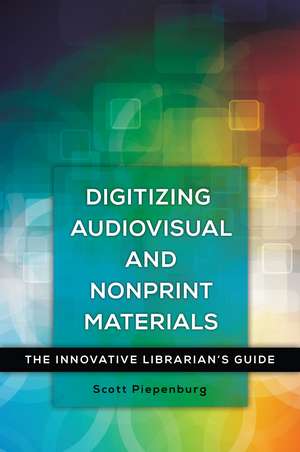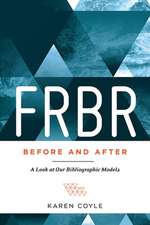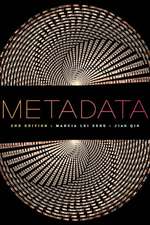Digitizing Audiovisual and Nonprint Materials: The Innovative Librarian's Guide
Autor Scott Piepenburgen Limba Engleză Paperback – 27 sep 2015 – vârsta până la 17 ani
Preț: 301.78 lei
Preț vechi: 351.71 lei
-14% Nou
Puncte Express: 453
Preț estimativ în valută:
57.75€ • 61.75$ • 48.15£
57.75€ • 61.75$ • 48.15£
Carte tipărită la comandă
Livrare economică 18 aprilie-02 mai
Preluare comenzi: 021 569.72.76
Specificații
ISBN-13: 9781440837807
ISBN-10: 1440837805
Pagini: 106
Ilustrații: 56 bw illus
Dimensiuni: 156 x 235 x 5 mm
Greutate: 0.2 kg
Editura: Bloomsbury Publishing
Colecția Libraries Unlimited
Locul publicării:New York, United States
ISBN-10: 1440837805
Pagini: 106
Ilustrații: 56 bw illus
Dimensiuni: 156 x 235 x 5 mm
Greutate: 0.2 kg
Editura: Bloomsbury Publishing
Colecția Libraries Unlimited
Locul publicării:New York, United States
Caracteristici
Offers easy-to-understand guidance on how to use digitizing to enable your library to recoup its investment in outdated but often-expensive AV collections
Notă biografică
Scott Piepenburg is head of cataloging at Valdosta State University, Valdosta, GA.
Cuprins
CONTENTSIntroductionChapter 1: Getting StartedChapter 2: HardwareChapter 3: Digitizing ImagesChapter 4: Digitizing SlidesChapter 5: Digitizing Sound RecordingsChapter 6: Digitizing Video RecordingsChapter 7: Finishing UpGlossaryIndex
Recenzii
The strength of the work includes the history of physical formats, particularly audio and video formats, as well as detailed discussions and images of the types of hardware and cables used to aid in the digitization of audio cassettes and VHS tapes. Piepenburg is Head of Cataloging at Valdosta State University and has a rich background in cataloging, and has written about the history of recording technology. His knowledge on these topics shows, and will benefit those looking to establish and enrich their baseline knowledge of audiovisual materials.
This small book is packed with information and librarians of any caliber will find it easy to follow Piepenburg's instructions to begin a digitization project of their own. The low-barrier technical threshold should not deter anyone. The book ends with the advice to "have fun." Librarians and archivists will enjoy reading this fast-paced book and most likely learn a thing or two in the process.
This small book is packed with information and librarians of any caliber will find it easy to follow Piepenburg's instructions to begin a digitization project of their own. The low-barrier technical threshold should not deter anyone. The book ends with the advice to "have fun." Librarians and archivists will enjoy reading this fast-paced book and most likely learn a thing or two in the process.

















